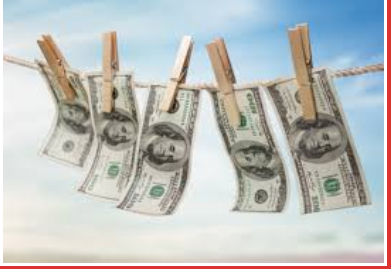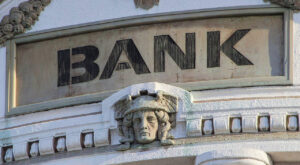Dollaren har været under pres den seneste tid, men Nordea skriver i en analyse, at dollaren fortsat vil være verdens reservevaluta. Dollarens andel af verdens valutareserve er på ca. 62 pct., og det er en stabil andel.
The USD will remain the No 1 reserve currency
Table 1: Our current convictions
Chart 1. What is good for the Donald is also good for the USD
Trumps alleged upcoming ”coup” – delaying the election – was probably part of the reason why the USD continued weakening due to the subsequent truck-load of bad press. EUR/USD even briefly touched 1.19 before it headed lower, and international stories started to emerge on how the USD “would lose its reserve currency status” over the coming years. For some reason, we have to take this debate each and every time that the USD starts weakening after a period of spectacular performance. No, the USD is not even close to losing its reserve status and there is no real alternative to it.
The USD share of international reserves was 62.6% in Q2-2008 and 62.0% in Q1-2020, which is a remarkably stable development for a reserve currency status that is continuously debated as much as is the case for the USD. Volatility in the EUR share of international reserves has been much larger as a comparison. The EUR share of international reserves was 26.6% in Q2-2020 but dropped to just above 20% in Q1-2020.
Chart 2. The USD is the only truly stable currency reserve and will also remain so
The USD is still the only currency that ticks all the boxes for a true reserve currency, while the move towards a common EU-bond market could be a step in the right direction for the EUR as a reserve currency, but any issuance in size will not be seen before 2021-2022 in the new “Corona-bonds” (Bond Watch: Next generation EU bonds)
Reserve managers will ask the following questions when picking a reserve currency; i) Is there a big, safe and liquid underlying bond market? ii) Is the currency used as a settlement asset in cross border trade? and iii) is the currency relevant for FX intervention purposes?
The USD is a clear yes on each of the three questions, while the EUR is moving in the right direction on i) and iii).
We would even expect the international USD reserves to pick up markedly over the coming 12-18 months despite all the noise. When the Fed decides to throw liquidity at everyone and their mother as has been the case since March, it usually allows international central banks to build up USD reserves over time.
The modus operandi is probably the following. First, the Fed prints a lot of USDs. Second, USD liquidity scarcity abates in international markets, which over time allows the USD appreciation pressure to fade as well. Third, when the USD liquidity scarcity abates, it usually goes hand in hand with a pick-up in global activity, why the USD could see a weakening pressure versus both G10 and EM currencies. Fourth, when the USD is weakening versus the local currency, it naturally leads to a build up of USD reserves in e.g. China.
In other words, when the Fed prints a LOT of USDs, the Chinese central bank ends up buying US Treasuries. How about that for killing a darling?
Chart 3. When the Fed prints a lot of USDs, the Chinese central bank ends up building FX reserves and buying Treasuries
We highlighted five factors to watch, if you are already turbo-long EUR vs. USD in your portfolio. i) EUR vs. USD positioning is already stretched (+10% of open interest), ii) EUR/USD usually doesn’t pick until long yields start to rise and curves steepen, iii) the USD liquidity impulse is NEGATIVE, iiii) a Second Covid-19 wave is luring around Europe and v) ECB is only game in town for Italy the rest of 2020 (since the recovery fund will not pay out until 2021).
The short USD positioning has been highlighted via several channels and it should be known stuff for market participants by now. We just want to remind you that we rarely see a bigger EUR long vs. USD than currently, which could mean that EUR momentum is running on fumes by now.
Chart 4. EUR positioning vs. USD is already stretched…
We would argue that a reflationary spiral is needed to fully establish a USD bear market in line with our discussion on the modus operandi for USD weakness and international USD reserve building. This also means that a curve-steepening trend (and higher long bond yields) is a prerequisite for a medium to long-term USD bear market. Yield curves are rather flattening currently as a response to stalling high-frequency economic activity data in the US but also in parts of Europe, and we basically remain in the flattener camp over the next 4-6 weeks among other things due to the super-negative USD liquidity impulse (Week ahead: The earth, sorry, the curve is flat)
As long as the reflationary spiral is held back by i) stalling high frequency data and ii) a weak/negative USD liquidity impulse, then we are (very) reluctant to raise a green flag for EUR/USD above 1.20.
Chart 5. If long bond yields pick up, so does EUR/USD.. But it’s not the case currently..
We remain bullish on the prospects of a MASSIVE ketchup effect in both activity and reflation trades 6-9 months down the road. The combined fiscal and monetary policy response to the Covid-19 crisis will likely prove almost “too big” and judging solely by the monetary impulse the ISM index will be headed for the moon in to 2021. This is a story for another month, though.
Chart 6. The landslide in USD rates should lead to a massive ketchup effect in the ISM index 6-9 months down the road
The USD liquidity impulse remains extremely negative, mostly because of a massively elevated Treasury General Account (TGA) at the Fed. The US Treasury has piled up almost $1800bn at an account at the Fed. It is safe to say that Mnuchin and Co. are ready to FLUSH the USD system with cheap liquidity ahead of November but any clear signals on fiscal agreement from the Congress remains to be seen. If the markets judge that this is not just a transitory elevation of the TGA, it could prove to be temporary USD positive.
Chart 7. The USD liquidity impulse is negative, which is usually a USD bullish signal with a time lag
The US economy by the way weathered the Corona storm better than peers in Q2, which is the usual pattern in times of crisis. The person who once took the decision to publish US GDP figures as seasonally adjusted annualized rates (SAAR) deserves to sleep next to a rooster for at least a quarter or so, since the -33% SAAR Q2 figure was misinterpreted almost everywhere. The comparable q/q Q2 values are the following: US GDP Q2 -9.5%, Germany -10.1%, Euro zone -12.1%, Italy -12.4% and Spain -18.5%.
Interestingly, Spain is/was much worse off than Italy, which is not exactly the impression you got from the negotiations around the European Recovery Fund. Italy will be granted more money than Spain and one could rightfully ask the question why the hell that is. Wasn’t this supposed to be a dedicated Corona-, and not a legacy, fund?
Chart 8. A GDP status. US back to 2014 levels, Germany back 2008 levels and Italy back to Medieval levels
Even if we are growing increasingly positive on the uniformity in European politics over the coming 3-5 years (thanks to Brexit), we remain to be convinced that a recovery fund will do anything but kick the can further down the road.
Italy has struggled growth-wise ever since the adoption of the EUR, which means that we are now talking about more than two decades of no growth at all. The Lira allowed for an (easy) external devaluation which kept Italy competitive versus peers, while the internal devaluation required in a currency union is much trickier to implement and often even politically unpalatable.
We didn’t even dare to include the Italian Q2-2020 GDP print in the below chart…
Chart 9. The reason why Italy is likely better off outside of the EUR in one chart
If European politics become much more uniform over the coming years, we should also expect an abating tail-risk in the EUR construction. Even if Italy doesn’t grow at all, the door is now open to a permanent transfer from North to South within the currency union. The most “naked” or true bet on a less poisoned political process in the Euro area would be a long EUR/CHF position.
EUR/CHF is yet to follow suit in the most recent EUR/USD rally, which could be a sign that this has mostly been a USD move so far. We remain long EUR/CHF, since the SNB is also actively safeguarding one’s downside risks.
Chart 10. EUR/CHF yet to reflect any EURphoria, why the EUR/USD move has mostly been about the USD
We also remain long USD/CNH in anticipation of a comeback for the USD over the coming 4-6 weeks, while the risk of a massive increase in tensions between US and China ahead of the presidential election remains clearly intact as well. We also decide to reflect this view via a short AUD/NZD position, which is also backed up by the recent clear divergence in the stringency in the Covid-19 policy response from Australia relative to New Zealand. The Victoria region will enter a strict 6-week curfew/lock-down as of today.
We go short AUD/NZD targeting 1.0330 and a S/L at 1.0920.
Chart 11. Australia is closing the economy again, while New Zealand is enroute to a re-opening.
Scandi markets: Sweden’s Covid-19 spread is decelerating, while Norges Bank is volatile in its FX purchases
The SEK has kept on performing over summer against both USD and EUR, even if STIBOR fixings have been fading over the same period. Stibor 3M has now bounced off the zero-mark over the past two weeks, which is likely a result of a slightly cheaper USD in the FX forward and a smaller oversubscription of Riksbank certificate auctions. Interestingly, the SEK has lost a little momentum against the EUR over the same few weeks, which could hint of an odd reverse relationship between SEK and rates. If SEK gains too much ground, we know that the Riksbank could chose to “kill momentum” with a depo rate cut.
We generally prefer to remove a few chips from positive Scandi FX bets (versus both USD and EUR) due to i) uniform positioning, ii) stalling economic momentum globally and iii) poor summer liquidity.
Chart 12. The USD has cheapened a little in the FX forward, which drives STIBOR upwards
We were, as far as we can judge, maybe the first bank to highlight how the Covid-19 crisis would lead Norges Bank to buy a truck-load of NOKs to fund the Norwegian budget deficit in sharp contrast to all other G10 central banks. This is now a consensus story but not necessarily a story that is fully baked into price action anyway. Norges Bank has been a bit volatile/unpredictable in its purchase strategy recently as they raised the tempo markedly in July but decided to lower it substantially again in August (from 2500mn to 2000mn a day).
They mention a recent large transfer from the GPFG (petrol taxation) as a reason for a lower purchase tempo through the month but another reason could be that they don’t want to buy too much into a thin liquidity in the first couple of weeks of August. If we extrapolate the current 2000m pace through the rest of year, Norges Bank will end up buying a little less than 450bn worth of NOKs, which is closer to the likely total 2020 budget deficit compared to the almost 500bn, if the 2500m a day pace was kept intact.
The latest official budget projection from the Norwegian government is a deficit of 479.6bn NOK published 12th of May, which is arguably clearly on the pessimistic side given the consumption/activity rebound in Norway since. Purchases will likely range between 1800m to 2000m for the remainder of 2020.
We find it too early to re-enter a long NOK position, since positioning is already stretched into a usually weak NOK season in August, why we will continue to watch price action in NOK/SEK closely with the purpose of eyeing a good opportunity to enter new longs later in August.





















